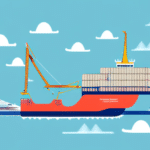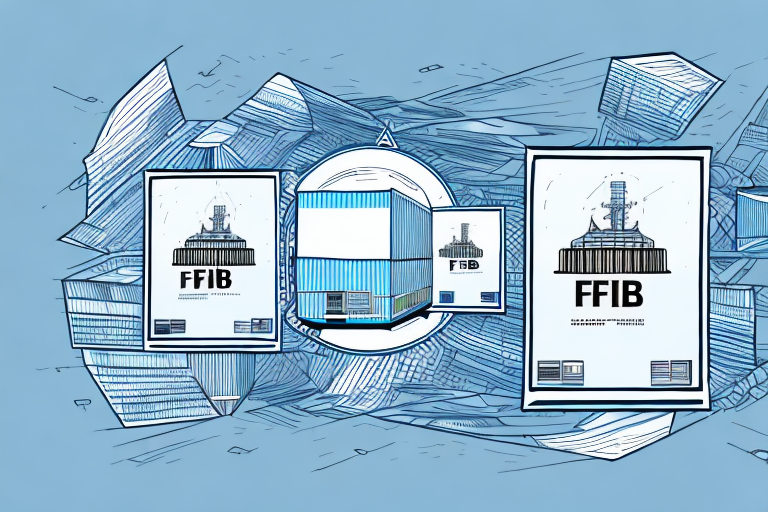What Does FOB Shipping Point Mean in Freight Terms?
When it comes to shipping freight, understanding the various terms associated with transportation can be overwhelming. One of these essential terms is FOB Shipping Point, a commonly used designation in the freight industry. In this article, we will explore the definition of FOB Shipping Point, its impact on freight delivery, its advantages and disadvantages, best practices for managing contracts, negotiating with carriers, real-life applications, the influence of technology, and the potential risks and challenges associated with its use.
Understanding the Basics of FOB Shipping Point
FOB Shipping Point, also known as Free on Board Shipping Point, refers to a shipping agreement where ownership of the goods transfers from the seller to the buyer once the goods are loaded onto the carrier at the seller’s premises. In this arrangement:
- Seller’s Responsibility: The seller handles the goods up until they are loaded onto the carrier.
- Buyer’s Responsibility: The buyer assumes ownership and responsibility for the goods once they are on the carrier, including any damages or losses during transit.
- Costs: The buyer is responsible for transportation costs, insurance, and customs fees from the point of shipping onward.
Understanding FOB Shipping Point is crucial for both buyers and sellers to delineate responsibilities clearly and avoid disputes. For a comprehensive comparison, see Investopedia’s explanation of FOB terms.
FOB Shipping Point vs. FOB Destination
It’s important to differentiate FOB Shipping Point from FOB Destination:
| Aspect | FOB Shipping Point | FOB Destination |
|---|---|---|
| Ownership Transfer | At the seller’s shipping location. | Upon arrival at the buyer’s location. |
| Risk Responsibility | Buyer bears the risk during transit. | Seller bears the risk until delivery. |
| Transportation Costs | Buyer pays from shipping point onward. | Seller covers transportation to destination. |
Clear specification in contracts ensures both parties understand their obligations, which can be further explored in Small Business Administration guidelines.
How FOB Shipping Point Impacts Freight Delivery
The designation of FOB Shipping Point influences freight delivery in several ways:
- Responsibility: Determines who is liable for goods during transit.
- Cost Allocation: Specifies which party bears transportation costs.
- Carrier Selection: May involve negotiations over preferred carriers.
- Insurance Requirements: Buyer may need to secure additional insurance coverage.
For example, if a buyer is international, they must manage customs clearance and related fees, which can be complex. According to the U.S. Customs and Border Protection, understanding these responsibilities is essential for smooth cross-border transactions.
The Role of FOB Shipping Point in Freight Transportation
FOB Shipping Point serves as a critical component in freight transportation by:
- Defining ownership transfer which affects liability and insurance.
- Clarifying the point at which risk transitions from seller to buyer.
- Facilitating cooperation between shippers and carriers by outlining obligations.
Effective use of FOB Shipping Point ensures that both shippers and carriers have a clear understanding of their duties, promoting efficient and reliable transportation operations. Industry reports, such as those from the American Trucking Associations, provide further insights into these practices.
Exploring the Advantages of FOB Shipping Point for Shippers and Carriers
Adopting FOB Shipping Point offers several benefits:
For Shippers:
- Cost Efficiency: Buyers handle transportation and insurance, reducing seller’s overhead.
- Control Over Carrier Selection: Allows buyers to choose carriers that best meet their logistical needs.
For Carriers:
- Clear Liability: Defines the point of risk transfer, simplifying claims and insurance processes.
- Consistent Payment: Ensures carriers are compensated once goods are shipped.
These advantages contribute to streamlined operations and better resource management within the supply chain.
Differences Between FOB Shipping Point and Destination Terms
While FOB Shipping Point and FOB Destination both define crucial aspects of shipping agreements, they differ primarily in the transfer of ownership and liability:
- FOB Shipping Point: Ownership and risk transfer when goods are shipped.
- FOB Destination: Ownership and risk remain with the seller until delivery.
These distinctions have significant implications for accounting, insurance, and risk management. Businesses should consult resources like the Investopedia guide on FOB terms for a deeper understanding.
Common Misconceptions About FOB Shipping Point Explained
Several misconceptions surround FOB Shipping Point:
Misconception 1: Buyer Bears All Transportation Costs
While buyers are responsible for costs post-shipping point, initial handling and loading fees may still be shared or negotiated between parties.
Misconception 2: Limited to Sea Freight
FOB terms apply to all modes of transportation, including air, rail, and truck. Each mode may have unique considerations, as outlined by the U.S. Department of Transportation.
Misconception 3: Exclusion of Freight Handling Fees
All associated fees should be transparently included in the shipment invoice, regardless of FOB terms.
Clarifying these misconceptions helps in drafting accurate contracts and setting realistic expectations.
Best Practices for Managing FOB Shipping Point Contracts
Effective management of FOB Shipping Point contracts involves:
Clear Documentation
- Specify FOB terms explicitly in contracts.
- Detail responsibilities for both buyer and seller.
Carrier Selection Procedures
- Evaluate carrier reliability and compliance.
- Assess carrier insurance coverage.
Insurance and Liability
- Ensure adequate insurance coverage is in place post-transfer of ownership.
- Define liability clauses to mitigate risks.
Regular Contract Reviews
- Update contracts to reflect changing business needs and regulations.
- Monitor carrier performance and compliance.
Adhering to these best practices can significantly reduce disputes and enhance operational efficiency.
How to Negotiate FOB Shipping Point Terms with Your Carrier
Negotiating FOB Shipping Point terms requires strategic planning:
Assess Transportation Needs
- Determine the most cost-effective mode of transport.
- Evaluate delivery timelines and reliability.
Research and Compare Carriers
- Analyze carrier performance metrics.
- Compare insurance offerings and liability clauses.
Negotiate Rates and Terms
- Leverage volume for better rates.
- Clarify payment terms and conditions.
Confirm Insurance and Compliance
- Ensure carriers meet all regulatory requirements.
- Verify adequate insurance coverage for goods in transit.
Successful negotiations result in mutually beneficial agreements that safeguard both parties’ interests.
Real-Life Examples of FOB Shipping Point in Action
FOB Shipping Point is utilized across various industries:
Manufacturing
A manufacturer ships components to a distributor using FOB Shipping Point, transferring risk once loaded onto the truck. This allows the distributor to manage further logistics and inventory.
Retail
A retailer orders products from a supplier with FOB Shipping Point terms. The retailer is responsible for transportation from the supplier’s warehouse to their own stores, enabling better control over supply chain operations.
Agriculture
Farmers export produce under FOB Shipping Point terms, ensuring that buyers assume responsibility as soon as the goods are shipped. This arrangement facilitates international trade by clearly defining liability.
How Technology is Impacting the Use of FOB Shipping Point in Freight Transportation
Advancements in technology are transforming how FOB Shipping Point is managed:
Transportation Management Systems (TMS)
- Automate carrier selection and freight booking.
- Enhance shipment tracking and visibility.
Electronic Data Interchange (EDI)
- Streamline communication between buyers, sellers, and carriers.
- Reduce errors and improve documentation efficiency.
Blockchain Technology
- Enhance transparency and security in transaction records.
- Facilitate smart contracts that automatically enforce FOB terms.
These technologies enable more efficient and transparent management of FOB Shipping Point agreements, reducing delays and enhancing collaboration across the supply chain.
Potential Risks and Challenges Associated with Using FOB Shipping Point in Freight Contracts
While FOB Shipping Point offers various benefits, it also comes with potential risks and challenges:
Risk of Damage or Loss
Once ownership transfers, the buyer bears the risk. Inadequate packaging or handling can lead to damages, necessitating comprehensive insurance coverage.
Delays in Transit
Transportation delays can disrupt the supply chain. Effective carrier selection and contingency planning are essential to mitigate this risk.
Customs and Regulatory Challenges
International shipments may face complex customs procedures. Buyers must navigate import regulations and ensure compliance to avoid delays and penalties.
Dispute Resolution
Ambiguities in FOB terms can lead to disputes over responsibility and costs. Clear contract terms and effective communication are vital to prevent and resolve conflicts.
Addressing these challenges requires diligent contract management, robust insurance policies, and proactive risk management strategies.
Conclusion
FOB Shipping Point is a pivotal concept in freight shipping that delineates the transfer of ownership and responsibility from seller to buyer. By comprehensively understanding its implications on freight delivery, cost allocation, and risk management, businesses can make informed decisions to optimize their supply chain operations. Adopting best practices in contract management, leveraging technological advancements, and being aware of potential risks ensures that FOB Shipping Point agreements enhance efficiency and mitigate liabilities effectively.






















